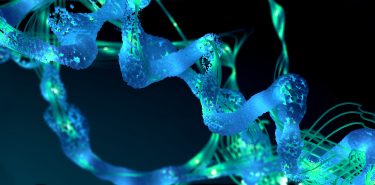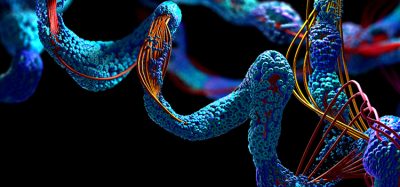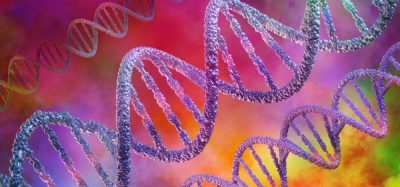The diversity of synthetic biology applications
Posted: 23 September 2021 | Dr Jim Collins (MIT) | No comments yet
Synthetic biology processes can be useful to therapeutic development, diagnostics and vaccine advancement. Drug Target Review’s Victoria Rees spoke with Dr Jim Collins, Termeer Professor of Medical Engineering & Science at MIT and Founding Core Faculty & Lead, Living Cellular Devices at the Wyss Institute at Harvard University, to explore his research utilising synthetic biology and where he sees this field progressing in the future.

The field of synthetic biology encompasses both the design and construction of novel biological systems and the re-design of existing systems. While the concept has been around for over 20 years, this area of research is still revealing its full potential to those in the life sciences.
“Synthetic biology enables us to take an engineering approach to living cells and more broadly, biological material,” Collins began. “This provides us with capabilities to design and introduce novel functions and/or enhance existing functions.”
According to Collins, this opens up the possibility for improving current therapeutics or developing novel therapeutics. He remarked that there are two clear benefits of using synthetic biology for therapeutic development. One is the capability to customise the design of a system for an intended purpose. The second is the possibility to programme a living system or a cell-free system so that it can sense its environment, make a decision and act as a result. Collins emphasised that outside of the context of synthetic biology, such elements of control are difficult or unachievable in traditional therapeutic spaces.
Reprogramming organisms
Collins’ work focuses on reprogramming organisms, building on earlier work in synthetic biology around designing synthetic gene circuits.
“We have shown that it is possible to take an engineering approach to create biological circuits that can perform a variety of functions, including making a decision on a particular signal in a logical manner,” he explained. “Initially, over a decade ago, we showed that it is possible to group such circuits with natural pathways and networks in living cells. The uploading of such circuits allows cells to sense their environment and act on their environment. Our initial efforts in that regard led to the development of whole cell biosensors.”
Synthetic biology enables us to take an engineering approach to living cells”
Collins elaborated that after this, he and his team shifted towards engineering bacteria to create living therapeutics and diagnostics. Motivated by a challenge from the Gates Foundation to reprogramme bacterium to detect and treat cholera, the researchers demonstrated the success of their work in a paper published in Science Translational Medicine. They were able to repurpose the quorum sensing system in cholera and introduce this into Lactococcus lactis, enabling the bacteria to serve as a living synthetic diagnostic that functioned effectively in mice.
“The process of reprogramming organisms is about utilising standard techniques of cloning, where we can initially have an engineering concept of the circuit we want to eventually construct,” said Collins. He explained that, typically, this is modelled mathematically to identify the right components and circuit architecture, before it is then built and tested in the lab. Circuits constructed using various enzymatic tools are then introduced into a cell and serve to ensure that it is coupled with the right input and output pathways, when it is then tweaked and tested.
Synthetic biology and diagnostics
“The design capabilities that synthetic biology brings to therapeutics can also be applied to diagnostics,” said Collins. One successful example he highlighted is synthetic biology efforts in the context of CRISPR diagnostics. For example, an approved COVID-19 test based on this principle is in use and is on track for 10 million tests to be conducted per month. The advantage of this, Collins said, is easy programmability, including nucleic acid techniques. Other benefits include additional control elements, such as building in an amplification step via synthetic biology and the ability to perform logical operations by considering multiple inputs and making a decision, resulting in an output.
Challenges of synthetic biology
 The dominant challenge associated with synthetic biology is the length of time required to programme organisms, according to Collins. As the genetic elements need to be combined and then tested in living cells, this can take weeks and even months. The second issue that Collins believes hinders the field of synthetic biology is the limited number of molecular components available at present that can enable biological circuit engineering to produce any desired function. Lastly, Collins said that our understanding of biology is not yet at a level where circuit behaviour can be quantitatively predicted; scientists cannot yet join together established components and know comprehensively and quantitatively how they will function when placed inside a living host. To reach this level, the interactions of molecular components with the host need to be studied more comprehensively.
The dominant challenge associated with synthetic biology is the length of time required to programme organisms, according to Collins. As the genetic elements need to be combined and then tested in living cells, this can take weeks and even months. The second issue that Collins believes hinders the field of synthetic biology is the limited number of molecular components available at present that can enable biological circuit engineering to produce any desired function. Lastly, Collins said that our understanding of biology is not yet at a level where circuit behaviour can be quantitatively predicted; scientists cannot yet join together established components and know comprehensively and quantitatively how they will function when placed inside a living host. To reach this level, the interactions of molecular components with the host need to be studied more comprehensively.
“I think we need more extensive efforts of collaborations between engineers and biologists. We need better tools to monitor cellular responses and we need to collect large-scale datasets to take advantage of emergent, advanced computational techniques, such as deep learning methodologies,” said Collins.
The evolution of synthetic biology
Collins thinks that there will be significant growth in start-ups and midsize companies advancing synthetic biology, as well as growth on the academic side. However, within the industry as a whole, he believes that therapeutics is likely the area it will be applied to most.
“I think the most exciting future direction for synthetic biology is in therapeutics. The field is a little over two decades old, so right now we are in our third decade of operation,” said Collins. Believing that synthetic biology offers design tools and capabilities that will enable the creation of next-generation therapeutics across a wide range of indications, he also highlighted that it could impact many different areas of therapeutic development, including cell-based therapies, gene therapies, small molecule therapies and RNA therapeutics.
However, one area that Collins highlighted a growing use of synthetic biology in is vaccine development. He said that it has played a major role in the progression of vaccines, especially the recent utilisation of messenger RNA (mRNA) in prophylactic platforms.
The design capabilities that synthetic biology brings to therapeutics can also be applied to diagnostics”
“Our lab was involved with the synthetic mRNA study that led to the founding of Moderna. We were in the collaboration with Derrick Rossi and George Daley, where our teams developed and introduced synthetic mRNA for cellular reprogramming, an effort that led Rossi to form Moderna, which this past year has had a worldwide impact. In the coming years, I think we will see additional, exciting efforts to advance synthetic mRNA-based vaccines and therapeutics,” he explained.
Conclusion
“Synthetic biology will emerge as one of the leading technologies of this century, in particular in the context of health,” summarised Collins. He emphasised that collaboration is the future for synthetic biology and that this will help uncover the great potential that synthetic biology has yet to show. “There is still so much to be learned, so much to be discovered, so much to be developed… It is a space with tremendous potential for innovation and impact.”
Dr Jim Collins is the Termeer Professor of Medical Engineering & Science and Professor of Biological Engineering at MIT, as well as a Member of the Harvard-MIT Health Sciences & Technology Faculty. He is also a Core Founding Faculty member of the Wyss Institute for Biologically Inspired Engineering at Harvard University and an Institute Member of the Broad Institute of MIT and Harvard. He is a founder of the field of synthetic biology and his patented technologies have been licensed by over 25 biotech, pharma and medical devices companies and he has co-founded a number of companies, including Synlogic, Senti Biosciences, Sherlock Biosciences and Cellarity, as well as Phare Bio, a non-profit focused on artificial intelligence (AI)‑driven antibiotic discovery.
Related topics
Bioengineering, Bioinformatics, Biopharmaceuticals, Biotherapeutics, Molecular Biology, Research & Development
Related organisations
Gates Foundation, GenScript, MIT, Moderna, Science Translational Medicine, Thermo Fisher Scientific, University of Harvard’s Wyss Institute
Related people
Derrick Rossi, George Daley







